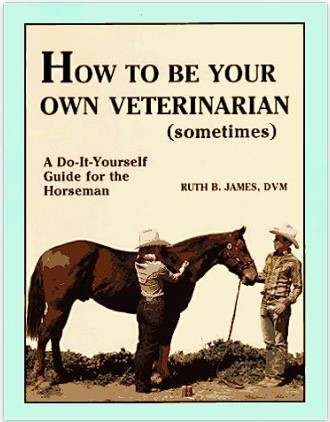For horse lovers who have always been curious about the world of veterinary medicine, there’s a book that offers a unique perspective on the subject. “How to be Your Veterinarian (Sometimes)” is a captivating read that takes you on an exciting journey into the world of equine care. Written with a touch of humor and an abundance of practical insights, this book provides an invaluable resource for horse enthusiasts who want to deepen their understanding of veterinary practices.
Chapter 1: The Veterinarian’s World In this chapter, the author, a seasoned veterinarian, sets the stage by delving into the daily life and challenges faced by veterinarians. From their extensive training and expertise to the unpredictable nature of their work, readers gain a newfound appreciation for the dedication and skill required to care for our equine companions.
Chapter 2: Equine Anatomy 101 To be your veterinarian, you need to have a basic understanding of equine anatomy. This chapter breaks down the intricacies of a horse’s anatomy in an accessible and engaging manner. Through detailed descriptions and illustrations, readers learn about the different systems within a horse’s body and how they function.
Chapter 3: Common Equine Ailments From colic and lameness to respiratory issues and skin conditions, this chapter explores the most common ailments that horses face. Drawing from real-life cases and experiences, the author provides valuable insights into the symptoms, diagnosis, and treatment options for each condition. By arming readers with this knowledge, the book empowers horse lovers to take better care of their equine friends in times of need.
Chapter 4: Emergency First Aid for Horses Accidents and emergencies can happen at any time, and being prepared is essential. In this chapter, readers discover practical tips and techniques for handling emergency situations, including wound care, bandaging, and administering basic first aid. By understanding these critical skills, horse lovers can be proactive in providing initial care while waiting for professional veterinary assistance.
Chapter 5: Communication with Your Veterinarian Effective communication is key in ensuring the best possible care for your horse. This chapter focuses on developing a strong partnership with your veterinarian, discussing how to effectively communicate symptoms, observations, and concerns. By fostering open and collaborative relationships, readers can work alongside their veterinarians to make informed decisions and provide the best care for their horses.
Conclusion: “How to be Your Veterinarian (Sometimes)” is more than just a book; it’s a gateway to a deeper appreciation of the veterinary world and a practical guide for horse lovers. By gaining insights into equine anatomy, common ailments, emergency first aid, and effective communication, readers are equipped to be proactive and informed partners in their horse’s healthcare. Whether you’re an equestrian enthusiast, a horse owner, or simply curious about the field of veterinary medicine, this book is a must-read that will leave you inspired and more connected to the well-being of your beloved equine companions.

